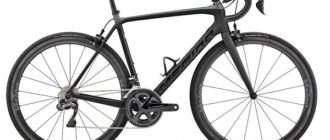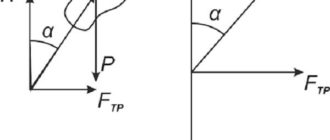“Mile-per-minute-Murphy” was the name of the first speed record set in the late 19th century. Following the train on a wooden platform between the rails of the railroad, Charles Murphy accelerated his bicycle to 100.2 km / h and covered a distance of one mile in one minute. A rigid canopy was attached to the back of the car to increase air resistance, which provided the world record for bicycle speed.
For a hundred years, professional riders have fought for supremacy, using their own muscle power, cars, electric and even jet propulsion. However, the limit of the fastest speed on a bicycle is not set. Each discipline has its champions. And the record holders are the achievers.
The speed record on a bicycle
The loudest records are set not by the bike, but by the cyclist. The result is provided by the physical fitness and experience of the athlete who prepared the vehicle for the hard-to-reach record. Many professional cyclists such as Lance Armstrong, Fabian Cancellara, Alberto Contador, Muller Korenec and others showed a top-notch ride.
On a level road
Maximum “sharpened” on the speed indicator highway type of bicycles. People have chosen the famous Bonneville Plain (Utah, USA) to set world speed records. The flat salt bed of the dried up ancient lake with a spatial spread is called a phenomenon of the planet. Here Fred Rompelberg set the speed record in the scheme: car – bicycle. The professional fifty-year old sportsman from the Netherlands was able to speed up to 268.8 km/h using a special machine with the lightest possible construction (a dragster).
The Guinness Book of Records defined the figure as the limit of a person driving a bicycle. The world speed record remained unattainable from 1995 to 2018. Denise Mueller Korenec (USA) was ahead of her competitor. The girl rode part of the track behind the sports car, and then continued to race on her own with an amazing record of 295.6 km/hour.
A higher result was shown by Swiss Francois Gissi in 2014. The extreme cyclist reached the highest speed of 333 km/h, managing to overtake the sport Ferrari in 4.8 seconds over a distance of 402 m. But it is impossible to consider the victory as a fair one. The athlete did not use muscle power, but installed a jet engine on the bike.
On the downhill slope
The absolute record belongs to French cyclist Eric Baron. In order to achieve maximum speed on the downhill, the ski track was rolled to perfection. It was too dangerous to use a fairing dome on the mountain, so a special mountain bike was designed to set the world record. In 2015, the champion dressed in a special outfit reached a speed of 223.2 km/h.
Other records belong to the desperate rider:
- On the gravel downhill 400m. – 210, 4 km/h..;
- from the top of an extinct volcano, 130 km/h.
On the hundred-meter run.
In 1994, Peter Rosenahl set a new world record on a straight 100-metre course without any equipment or assistance. The cyclist reached a speed of 29.7 km/h in 12 seconds.
An athlete from Holland also competed for the championship. Sebastian Bowyer managed to reach the maximum speed of the bike, close to 133.78 km/h. To achieve such a result, the champion accelerated for 8 km. The Ligerad, covered by a fairing like a butterfly cocoon, was built by students in Amsterdam.
To keep up with the speed.
In a challenging competition, it’s not enough to go fast. It’s important to keep the pace on the entire course. The famous Czech rider Ondřej Sosenka won at the cycling track in Moscow (2005), holding the result for one hour at 49.7 km/h. The judges noted: it was not possible to set a record with a higher figure because of the bike with a fixed gear and one speed.
Capabilities of the untrained rider
An ordinary person will never achieve a record speed without special training. But a cyclist who rides 1 hour a day is curious to know: how fast you can ride on familiar roads without participating in sports competitions.
| Type of bicycle and riding characteristics | Average Speed (km/h) |
|---|---|
| Mountain | 18-20 |
| Highway | 20-25 |
| Mountain bike (road in the woods) | 15 |
| Average | 12-19 |
| City Riding | 10-15 |
| On snow, paths with fallen leaves | 5-8 |
| Flat section of the piste (with holding speed for a few minutes) | 30-40 |
In the former Soviet Union, they established TRP standards for cyclists. The gold badge was awarded to men aged 19-28 if they rode 20 km/ 43 minutes. Women from 18 to 28 years old were awarded after covering 10 km / 25 min.
What criteria affect speed
There are many speed records set in the world: on a flat track, downhill, hundred meters, to hold the speed of an hour ride. Weather conditions, slope of the road, models of bicycle construction, technical solutions and even doping affect the performance. Therefore, you cannot compare the performance of a cyclist going down the mountain or going on the highway.
Level of training
Physical strength, resistance to overload, and experience are the main components of a cyclist’s success. The level of preparation affects riding speed more than the bike model. Trained athlete on the mountain design can easily overtake the highway biker and keep the pace when climbing up the mountain. The distance of 10 km will pass even an untrained person at a speed of 18 km/h. A well-trained cyclist can go several times faster and maintain 30 km/h for 100 km.
Resistance to oncoming air
As soon as a headwind blows, cycling is slowed down at 10-15 km/h. Increased air pressure is felt at 25 km/h. Because of the design features of a mountain bike (wide handlebars, low saddle fit), the vehicle is more difficult to control than a road bike. For example, Markus Stockl (Austrian champion) had to hold his breath for the whole race (40 seconds) to overcome the resistance of air currents. It is possible to hide from air resistance with the help of the air space that forms behind the car.
Rolling resistance
An unpleasant phenomenon occurs as soon as the cyclist begins to ride. As the speed increases, the resistance decreases. The problem can be handled by:
- The pressure in the tube;
- the right tyre;
- the wheels with a larger diameter;
- the weight of the rider.
Despite the aerodynamic “armor,” world champion Eric Baron crashed while descending the Alpine mountains. Constant air resistance and increasing vibration overturned the Red Rider, dragging with the remains of the bike for half a kilometer.
Friction in the gears
Worn parts, old hubs, dirty chain without lubrication are guaranteed to prevent the cyclist from gaining speed. High performance depends on the “health” of the gears. Too soft shock absorbers will delay movement on a straight road, but will increase speed on a track with an uneven surface. Professionals advise fans of city skiing to abandon the rear suspension, if the bike is equipped with a quality shock-absorbed fork.
Conclusion
Union Cycliste Internationale ratifies the most amazing records. The Union Cycliste Internationale believes that in the world of sporting achievements there is always room for those who have not stopped “reinventing the bicycle” and continue to dream.











Incredible! Cycling is an amazing way to go fast and has so many benefits like getting great exercise. It’s inspiring to see how the world speed records on a bicycle are continually being broken. Keep up the good work!